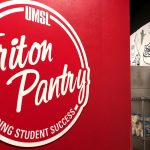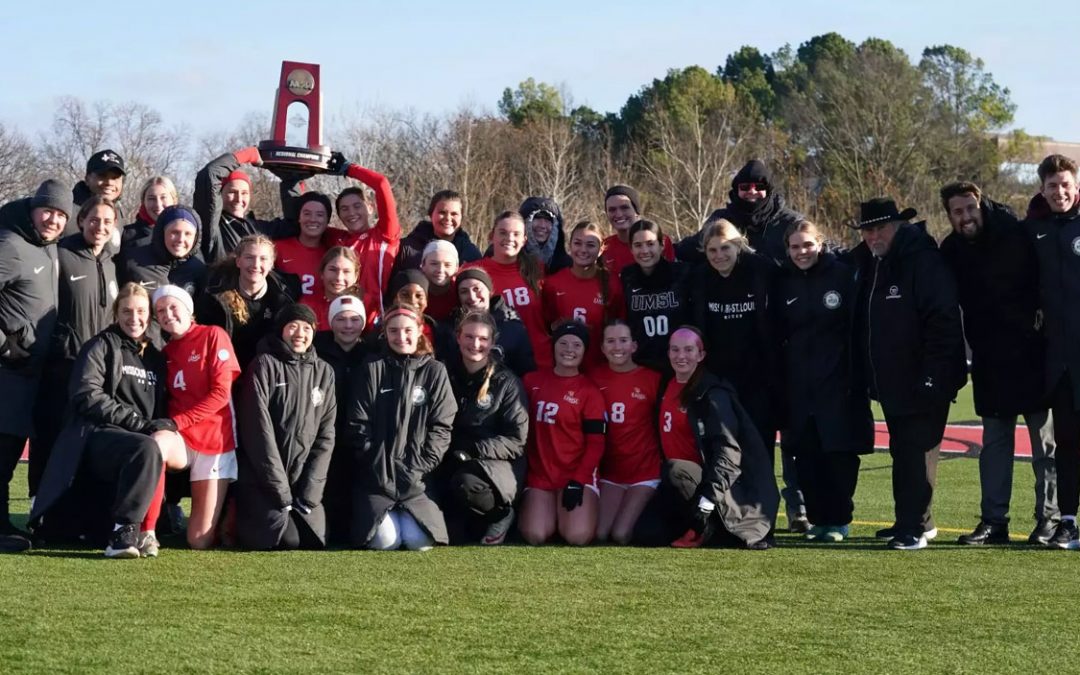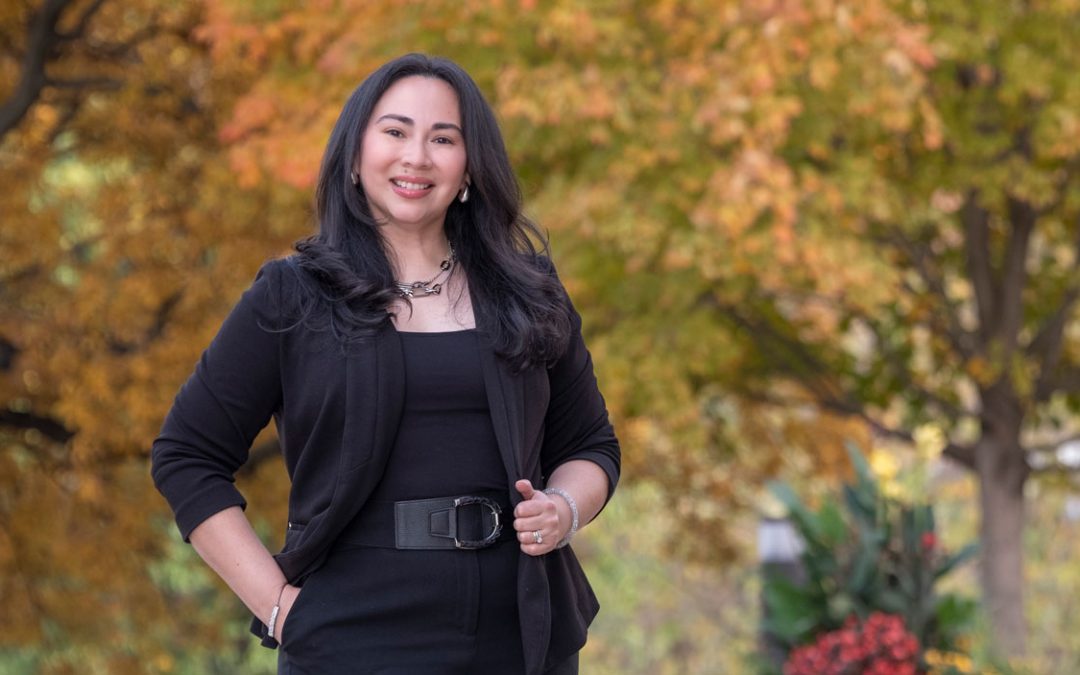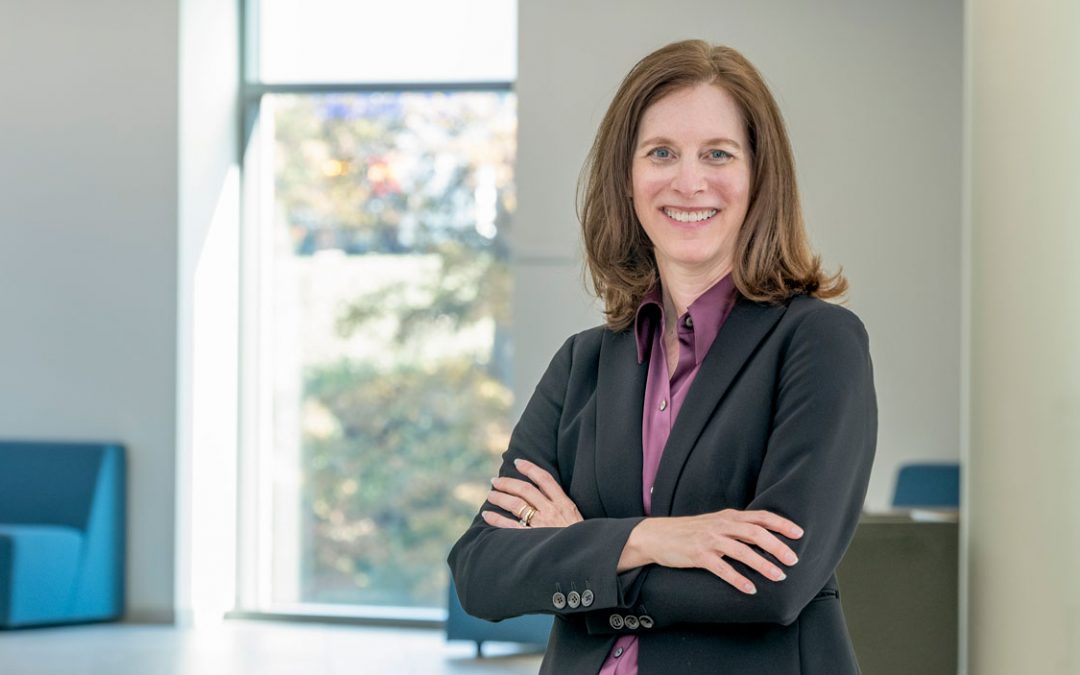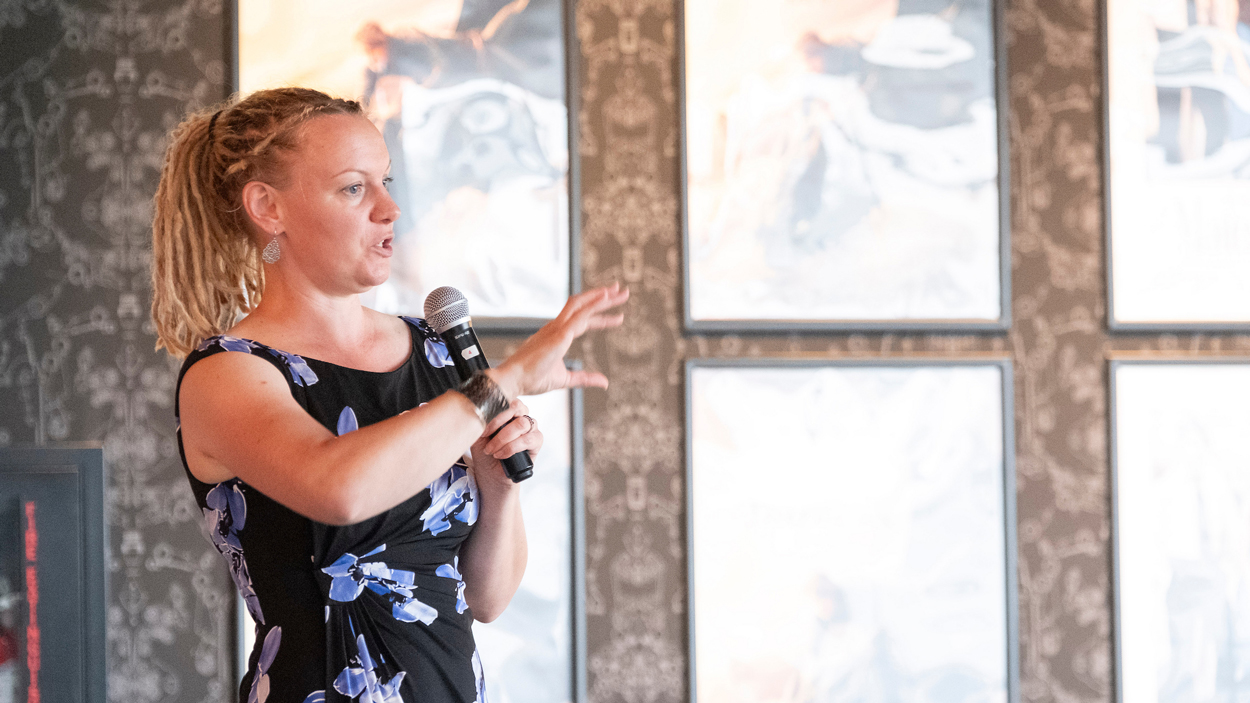
Associate Professor Sandra Langeslag addresses the audience during her presentation, “Comparing Romantic Love and Addiction” at Alamo Drafthouse Wednesday evening. (Photo by Derik Holtmann)
Why is it important to study romantic love?
For Sandra Langeslag, the answer is simple.
“Almost everyone falls in love at least once in a lifetime, and lots of people fall in love multiple times,” she said. “So that means that this research on romantic love pertains to almost all of us, right?”
Langeslag, an associate professor and associate department chair in the Department of Psychological Sciences at the University of Missouri–St. Louis, has been investigating the neurocognition of romantic love – how it impacts memory and attention – for nearly 20 years. She shared her insights and some of her recent research on the topic with community members at Alamo Drafthouse in the heart of St. Louis Wednesday evening.
The talk kicked off the UMSL Lecture Series at City Foundry. The university partnered with the food hall and entertainment destination to bring big ideas to its popular Live Art Market programming on Wednesday nights during June. The series is inspired by the Lectures on Tap series pioneered in New York and is curated to foster continued curiosity among adults.
Langeslag’s presentation, “Comparing Romantic Love and Addiction,” examined the ways in which love can mimic addiction.
“People who are in love seem addicted to their beloved, and I’m not talking about love addiction,” she explained. “Love addiction is the idea that some people are addicted to being in love. So, they are always in love with someone. When they are in love, their whole life revolves around this person. They can be really emotionally dependent on a person. That’s not actually what I’m talking about. I’m talking about anyone who falls in love and becomes addicted to their beloved. They think about them all the time, they want to be with them all the time.”
Langeslag became frustrated with existing scientific literature, which has noted the striking similarities between romantic love and drug addiction but never directly compared the two. She has set out to address that research gap with two ongoing studies in her Neurocognition of Emotion and Motivation Lab at UMSL.
But before jumping into the research, Langeslag first set the table for the crowd by explaining symptoms that overlap between love and addiction. First, she addressed craving, or wanting, and liking, which many people assume are roughly the same. It’s not quite that simple, though.
Langeslag illustrated this with an example from her own life.
“When I see chips, I really want to eat them, right?” she said. “Then I eat them, and I’m like, ‘Oh my God, this tastes so good.’ When I see a chocolate chip cookie, I also typically want to eat the chocolate chip cookie, but then when I eat it, I’m like, ‘It’s not so great.’ I’m always disappointed by chocolate chip cookies. When I see a kiwi, I never think, ‘Oh my god, I really want to eat a kiwi.’ I eat kiwis because I want to eat some fruit every day. But when I eat a kiwi, I’m often like, ‘Oh my god, this tastes really good,’ right? There are two processes here, where you may want something and/or you may like it when you actually consume it.”
She elaborated further, noting that craving corresponds to the motivational value of something, or how much effort someone is willing to put into getting that thing. At the same time, liking corresponds to hedonic value, or how much someone enjoys something when they experience it.
With addiction to a substance, craving typically starts off low and then ramps up over time. On the other hand, liking goes down over time because the effect decreases due to the development of tolerance. Langeslag posited that the opposite is true of love. Craving often starts high because new relationships are exciting, but that decreases over time. But liking often starts low because of the nervousness and uncertainty at the start of a relationship. It increases over time as the relationship becomes more established.
Langeslag also briefly touched on three other symptoms – arousal, attentiveness and pleasantness – before turning toward her research. She first addressed an ongoing study on love and chocolate inspired by previous research that showed people who crave chocolate exhibit greater attention to pictures of chocolate than pictures of other highly desired foods like pizza.
The study’s participants are people who have been in love for about four years and who also crave chocolate, consuming it 19 times per month on average. The experiment included questionnaires to measure craving as well as how pleasant pictures of chocolate and their beloved made them feel. Langeslag also measured attention with a visual fixation tool and photos of chocolate and the participants’ beloved.
“This is an ongoing study, but so far, it seems like people crave their beloved more than chocolate,” Langeslag said. “They feel more pleasant and more activated when looking at the beloved than chocolate, and they pay more attention to the beloved than chocolate. Now, you may say, ‘Chocolate craving is not a drug addiction,’ and I agree. So, we’re also running a study on love and vaping.”
The second study includes participants who have been in love for about six years and vape daily. The experiment also included questionnaires on craving and pleasantness, but instead of a visual fixation tool, Langeslag used a brain wave cap to measure attention. The results indicated that participants craved their beloved more than vaping and showed greater attention toward their beloved, as well.
“To summarize, there seems to be overlap between romantic love and drug addiction,” Langeslag said. “People that are in love seem to be addicted to their beloved, but we need more direct comparison data. I’m currently doing two studies to get some of that data. I think we still need way more. But so far, it seems that romantic love is even more intense in terms of craving, pleasantness, arousal and different types of attention than chocolate craving and vaping addiction, which is a little bit surprising to me, because these are not people that are newly in love.”
After her presentation, Langeslag conducted a lively and thoughtful Q&A session with the audience. Community members will have two more opportunities to engage with faculty members as the UMSL Lecture Series continues throughout the month.
UMSL Lecture Series schedule:
Wednesday, June 18
6:30 p.m. at Alamo Drafthouse: “Representation Matters: Who Gets a Voice in Municipal Government” with Anita Manion
Wednesday, June 25
6:30 p.m. at Alamo Drafthouse: “Beyond the Win: Dreaming Bigger than Success” with Scott Morris






